Thinking of changing the mood in your home with a fresh coat of paint? Well then you have to do some research. Did you know that the paint used on the walls is not the same as the one for the ceiling?
You actually need two different kinds of paint, each with its own characteristics and special attributes.
How to Paint Ceiling
Remember that you need to paint your ceiling before you start painting your walls. Also, make sure that the brush and roller you choose are of good quality because poor-quality products may yield unsatisfying results.
What you’ll need:
- 2.5-inch angle sash brush
- Painter’s tape
- 9-inch roller sleeve
- Extension pole
- Pan
- Ladder
- Benjamin Moore waterborne ceiling paint
Step One
Paint the edge of the ceiling first, right where it meets the wall. Using your brush, apply the paint 2 – 3 inches onto the ceiling and go down the walls. In case you don’t plan on painting the walls as well, apply painter’s tape on the wall, right where it meets the ceiling, to avoid any paint smudges on the wall.
Step Two
Pour the paint onto the tray and, using the roller, start painting the rest of the ceiling. It’s best if you start painting from the part that’s closest to the window, so that natural light will reflect the paint and allow you to move slowly across the rest of the ceiling.
Step Three
Make sure your roller is loaded with paint at all times. After dipping the roller in paint, apply it on an unpainted area and work your way to a wet area.
Step Four
Paint the ceiling in one session so that the coat will dry uniformly. Look at the paint can to see what are the recommended drying times.
Step Five
Don’t start applying a second coat unless it’s needed and only when the first coat of paint has fully dried.
Types of Ceiling Textures You Should Know
As with everything else in a home, the appearance of the ceiling is subjective. While some like a more traditional, flat appearance, others prefer the dimension that texture brings. It truly comes down to personal preference.
Popcorn
Popcorn ceilings have recently fallen out of popularity, owing to the texture’s difficulty in cleaning. When everything from smoke residue to dust accumulates on a popcorn ceiling, it can be difficult to clean without removing some of the texture.
Due to the increased surface area of this type of ceiling, it is beneficial for sound absorption and muffling. For these reasons, some people may continue to use them in family rooms or other noisy areas.
Skip trowel
Skip troweling is a common technique for textured ceilings because it adds dimension and a subtle “stuccoed” effect to the ceiling. Hand-applied skip trowel texture created with joint compound and coarse sand. The compound is then distributed using a trowel to create the texture.
Skip trowels are popular in high-end homes due to their Mediterranean-inspired appearance. If you’re looking for a sophisticated, understated texture to decorate your ceiling, skip trowel may be the way to go.
Orange peel
When you spray drywall compound onto the ceiling, it creates this slightly rough but nevertheless soft-looking texture. It’s similar to a splatter effect but more refined.
It is a more refined and subtle finish than knockdown and is often a common choice for contemporary homes. It is also frequently seen in commercial establishments. It creates the appearance of a textured ceiling while being easy to clean when necessary.
If you’re drawn to texture but prefer a more subtle, subdued style, orange peel may be the way to go. Additionally, it is the simplest and most economical way of ceiling texturing. Additionally, it is the most often used drywall texture on walls
Knockdown
Knockdown is a texture that resembles skip trowel in appearance. To begin, you’ll have to apply a watered-down compound on the ceiling. As the chemical dries partially, it drips slightly, forming “stalactites.” After scraping away the stalactites, a stuccoed texture is left.
As with skip trowel, knockdown is excellent for concealing tiny flaws and imparting subtle depth to a room. However, manually knocking down the texture with a trowel after it has been sprayed requires more labor.
Swirled
Although the swirled ceiling texture is not as frequently seen as some of the other textures in this collection, it is worth investigating. It’s a stunning, one-of-a-kind appearance.
Swirled ceilings are created by “swirling” a sponge or a tool through the compound just before it settles. As a result, a beautiful “fanned” pattern with an art deco flair is created. If you have an older home that has been expanded, the swirling ceiling will give the new addition a wonderful vintage vibe.
Flat
Flat ceilings offer a timeless, unpretentious appearance. The truth of the matter is that ceilings are rarely the focal point of a room, especially in a residential setup. If you truly want them to recede and become an inconspicuous element of your design, choose a flat ceiling.
The disadvantage of flat ceilings is that any defect will be seen. Additionally, smooth ceiling textures demand additional effort. To conceal building flaws, extra layers of mud and sanding are required.
Should I Paint My Ceiling the Same as My Walls?
This is one of the most common questions that people have when dealing with wall paint during home renovation. Hopefully, this section will answer this question, so you’ll know how to proceed with giving your rooms a fresh coat of paint.
In some situations, your walls will match your ceiling in terms of paint. When the walls and ceiling are the same hue, it can create the illusion of a smaller or more intimate space.
The most frequently painted rooms to match are those with lower ceilings and less surface space. This category includes closets, bathrooms, and, occasionally, stairwells.
If your ceilings are particularly high, you may choose to color them using the same color as that of your walls. This will bring tall or heavily vaulted ceilings down to a more coherent, cozier appearance.
When you’re ready to paint a ceiling, it is not necessary to match the color of the walls exactly. The hue can be slightly lighter and still maintain the room’s consistency.
Oftentimes, ceilings receive coats of white paint to provide dimension to the room. Additionally, this creates the illusion that the ceiling is in the background.
The most suggested ceiling shade is flat white, which can be combined with the same color trim. This unifies the entire room. However, you can choose a higher gloss for your trim to cover scuffed and beaten-up baseboards.
Best Paint for Ceilings
INSL-X PC120009A-01 Color-Changing Ceiling Paint
INSL-X Color-Changing Ceiling Paint simplifies the process of painting ceilings. This product was developed using a unique fading pink color-change technology that puts on pink to identify painted areas and then dries white, assisting in the prevention of missed spots. The paint dries to a flat white finish, which minimizes surface defects.
This acrylic paint works of both textured and smooth ceilings. It promises to dry really quick, so you can apply the second coat in two hours, if needed. Due to its self-priming nature, you won’t need to add primer prior to painting.
Glidden Interior Latex Ceiling Paint
The Glidden Interior isn’t a product that necessarily stands out of the crowd, but it’s surely one that gets the job done at a pretty convenient price. It is a splatter resistant paint that doesn’t leave too much room for surface impressions, so you can get a clear coat of paint with each application. This latex paint will dry out to a slight gray undertone, which maximizes its hiding potential.
Rust-Oleum 1990502 Painter’s Touch Latex Paint
When you want a versatile latex paint for your ceiling and other areas and surfaces inside or outside of the house, the Rust-Oleum 1990502 Painter’s Touch is just the right product. A single can of this paint can cover up to 120 square feet of surfaces, being dry to the touch in half an hour from application.
The flat finish will conceal surface imperfections, but you are required to stand the surface using 180/220-grit sandpaper. It’s also recommended to wash the surface with a degreaser before applying the paint, for better results.
Walls and Ceiling Interior Designs
The ceiling paint is obviously designed to be used on the ceiling. You only need a single coat to cover all the imperfections and there will be no splatters.
The wall paint, on the other hand, is thinner and you may need two or more coats to get the desired look, depending on the color.
Composition.
Ceiling paint is formulated to cover all the edges and to hide all the imperfections. It’s flat and the light doesn’t reflect on it so any small irregularities are not enhances but hidden. The paint is more viscous to eliminate drippiness. Ceiling paint has to cover well, stick well and hide well and this is usually achieved at the expense of other characteristics not needed for this portion of the room.
Wall paint is designed to be more durable so you can easily clean it with soap and water. Scrubbing and cleaning don’t damage the paint. Also, it’s available in a variety of finishes. Glossy wall paint can make a room feel more spacious.
Colors.
Ceiling paint is designed to allow you to apply it with ease. Some brands make their paint in such a way that it looks pale blue or pink when applied and then turns white when it dries out. This way you can easily spot the missed areas and apply the paint evenly. The colors available for ceiling paint are, however, very limited so if you want something less common you’ll most likely have to color your paint manually.
Paint designed for the walls is a lot more flexible. Is comes in a variety of finishes and colors, numerous different hues and can be used to create all sorts of interesting designs, patterns, etc.
Special characteristics.
There’s a variety of wall paint types, depending on the room you want to paint. For example, for the bathroom you should use wall paint that’s water resistant as well as resistant to mold and mildew. For the kids’ room, you’ll want something very resistant that can withstand scrubbing since you’ll have to clean the walls often. The same thing goes for the kitchen.
As far as ceiling paint goes, it’s basically the same for every room of the house. It just has to feature the attributes enumerated above.
There are lots of different ways to use paint to make either the ceiling or the walls of a room stand out. This bedroom designed by Robin Gonzales Interiors is interesting and not just because of its capacity for no less than 8 beds but also because it has a beautiful lime-colored ceiling with white beams going across it.
Plain white walls and ceilings can look great too, especially when they’re complemented by contrasting support beams or other elements that distract from the monochrome backdrop. Wettling Architects offer here a beautiful example in the form of this stylish beach house living room with raw wooden beams and a stone fireplace.
It’s not very often that we see a ceiling that truly stands out. It’s often overlooked and usually stays white which is why designs like the one designed by Obelisk Home are so inspiring. The ceiling in this bedroom has a focal point centered above the sleeping area while the rest of it and the walls are white in order to establish a balanced look.
Putting an emphasis on the ceiling is a really cool idea for spaces like the kitchen where there’s a lot going on and the aesthetics take a step back in favor of functionality. Rather than having all the walls covered in cabinetry, this kitchen has two big farmhouse-style islands marked by dark gray ceiling sections with ornate chandeliers hanging from their center.
By giving this basement a black ceiling, studio Ryan Duebber Architect (RDA) managed to more easily hide all the exposed pipes and other elements, creating an intentionally industrial yet still very much simple and modern décor for the living room.
Here the kitchen and the dining area are combined into one big and open space. The wooden floor looks the same throughout the space as well as the directly adjacent living room and that provides continuity. The ceiling however is the one that differentiates these areas and helps them stand out each in their own way. This interior was designed by RLH Studio.
Interestingly enough, this is a way of making the walls of a room appear taller. The idea is to shave the walls and the ceiling painted in different and contrasting colors and to create a border along the upper section of the walls in the same color as the ceiling. This is also a cool and easy way of dealing with walls or corners that are not perfectly straight and of hiding small imperfections.
This kitchen furnished by William Ohs needed a little bit of color in its design and it came in the form of this beautiful blue ceiling. That allows all the cabinetry to remain plain white and draws the eyes up towards the ceiling. Also, the color is reminiscent of a clear blue sky and creates a relaxing, calming and serene ambiance in the room.
Black is a very strong and often intimidating color which not many dare to include into the interior design of their homes. If used in a stylish and creative manner, it can look really amazing. Check out this gorgeous dining room by Lizette Marie Interior Design. It has an elegant wooden floor, wallpapered walls with a graphical black and white pattern, a chic chandelier and stylish furniture throughout. The element that stands out the most however is the black ceiling.
On the subject of cool and eye-catching ceilings, we’d also like to direct your attention towards this study room created by Nicholaeff Architecture + Design. It has one of the most interesting ceiling designs we’ve seen so far that features an eye-catching mix of geometric shapes, colors, finishes and depths.
The post What Is The Difference Between Wall And Ceiling Paint appeared first on Home Decorating Trends - Homedit.

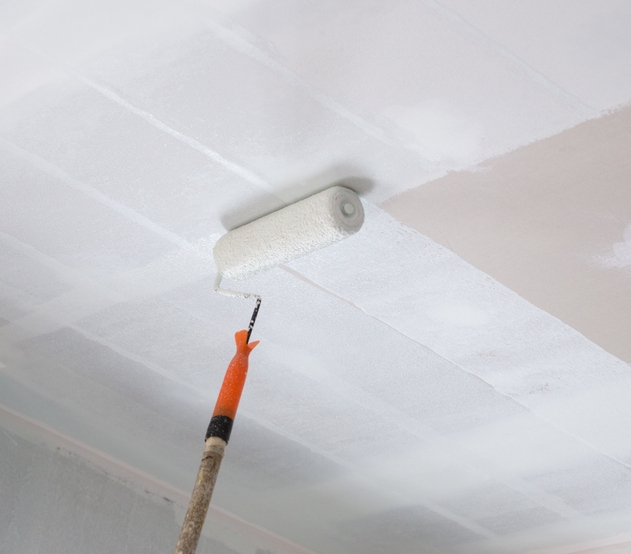
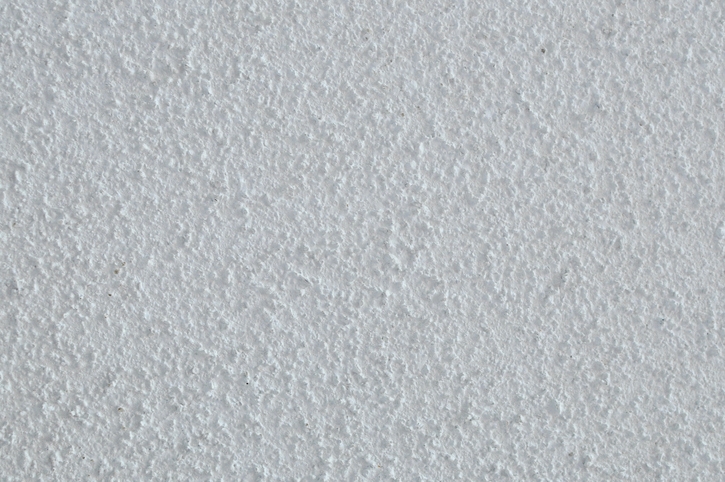





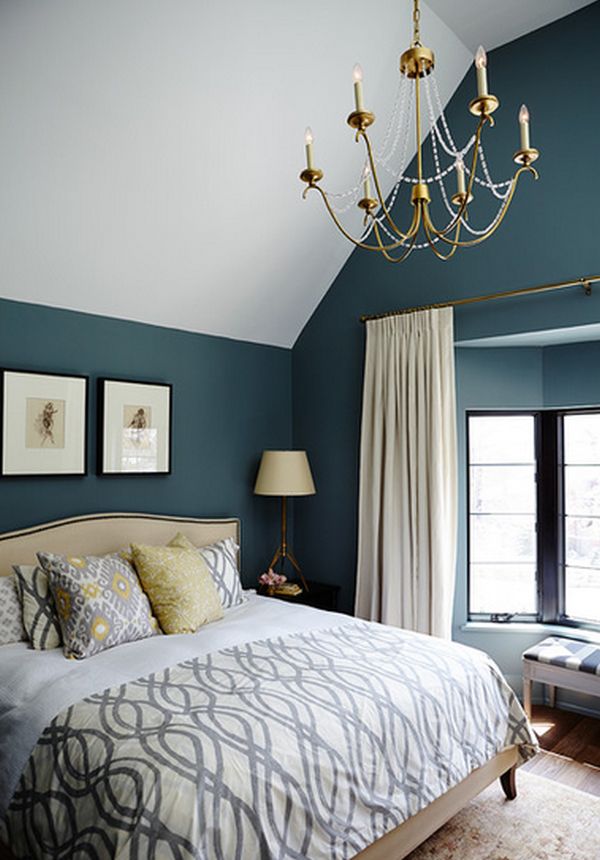




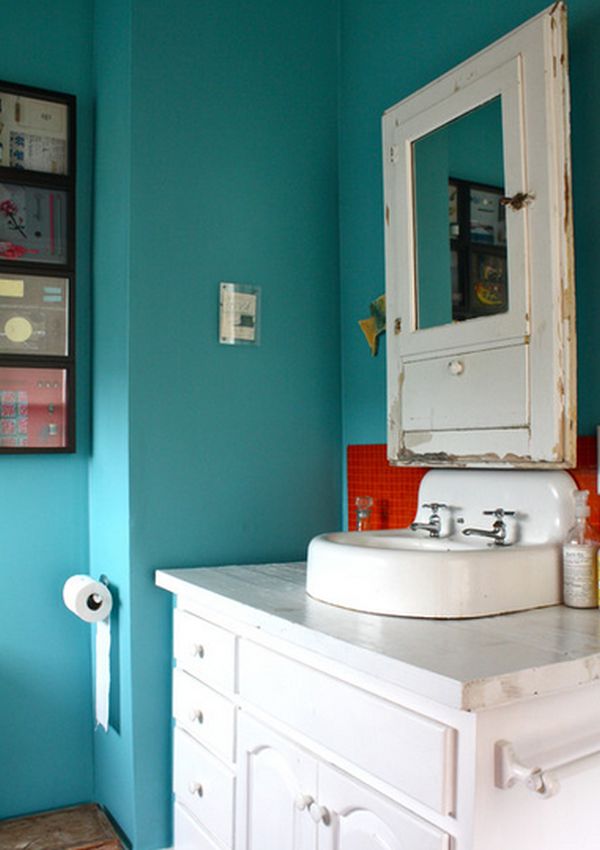

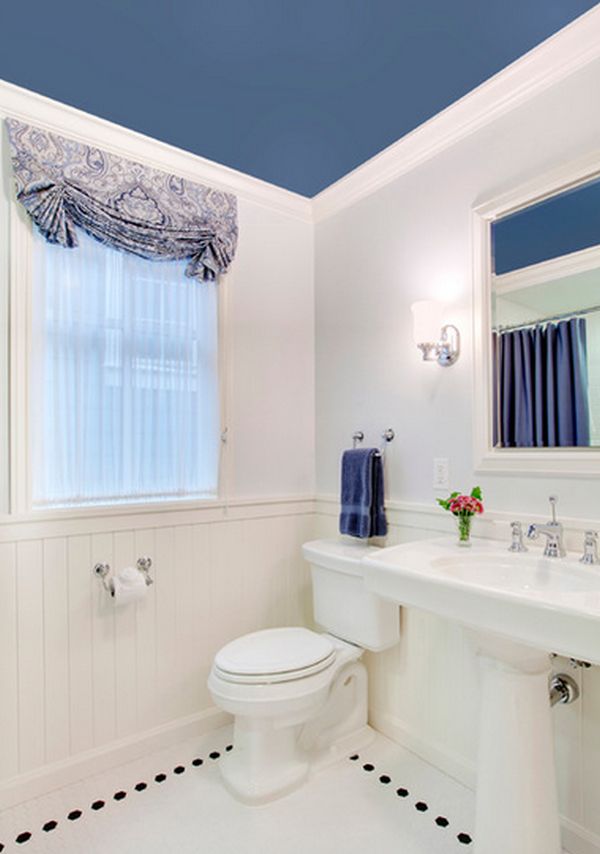











0 Commentaires